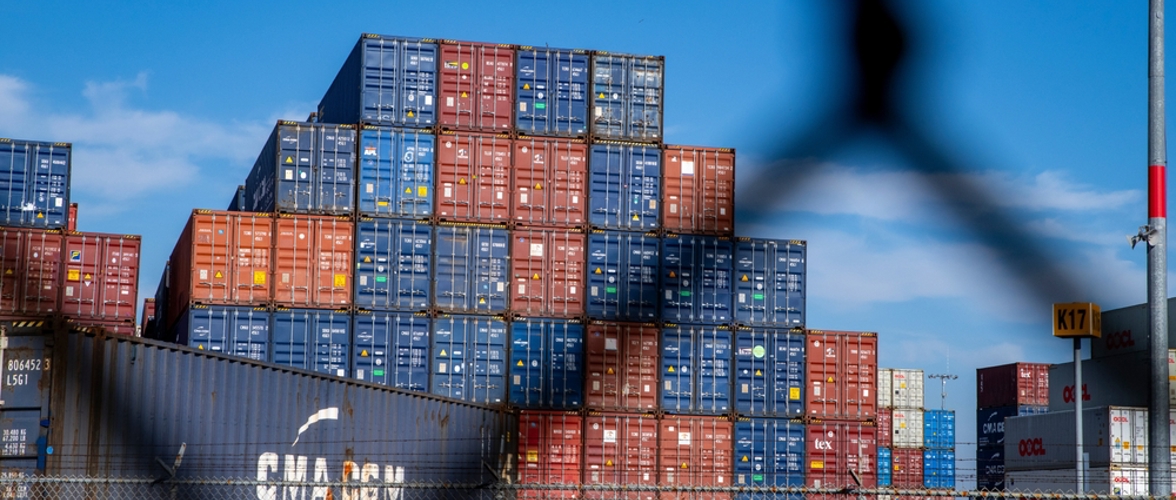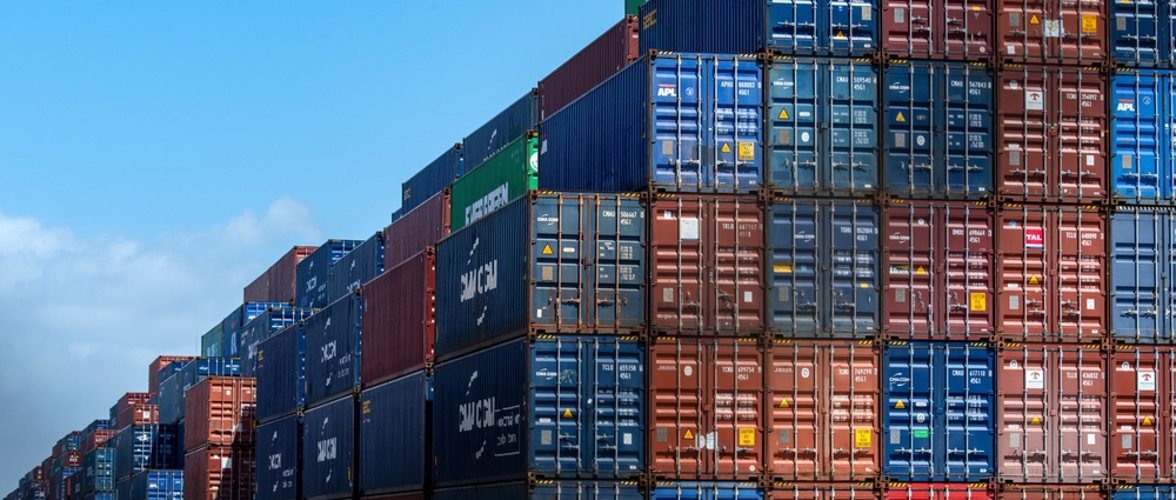Key Takeaways
- US tariffs most significantly impact manufacturing and agriculture, driving up costs and reshaping global trade relations for these sectors.
- Industries like technology and healthcare are differently impacted by tariffs due to their focus on digital products and domestic production.
- Tariffs can lead to higher consumer prices, disrupt supply chains, and challenge US competitiveness, pushing businesses to adopt adaptive strategies.
Tariffs have long been a central tool in global trade policy, shaping economic relationships between nations. Defined as taxes or duties imposed on imported or exported goods, tariffs serve various purposes, from protecting domestic industries to generating government revenue. However, the effects of tariffs are complex and far-reaching, influencing prices, trade balances, and competitive dynamics across industries.
For example, in 2018, the US imposed tariffs on steel and aluminum imports to protect local producers. While this boosted demand for US-made steel, it also raised costs for industries relying on steel, like automotive and construction, and led to retaliatory tariffs from trade partners, affecting US exports and global competitive dynamics.
In recent years, tariffs have become a particularly hot topic due to escalating trade tensions and significant policy shifts, especially between the US and its key trade partners. Recent developments, such as the US-China trade war and broader global economic shifts, have prompted renewed debate about the effectiveness of tariffs and their impacts.
The current environment of globalization and economic interdependence means that tariffs, even when intended to help domestic industries, often have mixed and sometimes unintended or unanticipated consequences. By understanding how sectors like manufacturing, agriculture, technology and retail can adapt, we can gain insight into the broader economic implications of tariffs and how businesses navigate these challenges.
Understanding tariffs
Tariffs are essentially taxes imposed on goods as they cross international borders. They play a crucial role in trade policy, serving to either protect domestic industries from foreign competition or to raise government revenue. By making imported goods more expensive, tariffs can encourage consumers to buy domestically produced alternatives. However, they also have the potential to raise consumer prices and disrupt supply chains.
There are several types of tariffs:

The US has a long history of using tariffs. In the late 19th century, for example, tariffs were a primary source of government revenue. Over the years, however, US tariff policy has evolved, particularly in response to globalization and shifts in political power. Notable recent developments include the Trump administration's imposition of steep tariffs on Chinese imports, which led to retaliatory tariffs from China, sparking a trade war that has had lingering effects on multiple US industries.
Industries most affected by US tariffs
Manufacturing: Heavy machinery, automobiles, and consumer electronics
Manufacturing is one of the industries most heavily impacted by tariffs, particularly those relying on imported components. Industries such as automotive, heavy machinery, and consumer electronics are deeply integrated into global supply chains, making them vulnerable to tariff increases on imported goods. For example, tariffs on Chinese imports have led to increased costs for companies reliant on electronic components, steel and aluminum.
As a result, many manufacturers have passed these increased costs onto consumers through price hikes. Companies like Ford and General Motors have had to reevaluate their production strategies, with some shifting production to countries unaffected by the tariffs or using local suppliers to mitigate the impact.
Key success factors for manufacturing professionals:
- Diversify your supplier base to minimize exposure to tariffs from specific regions and reduce supply chain risks.
- Enhance inventory management practices to better handle cost fluctuations caused by tariffs and maintain product availability.
- Invest in automation and technology to lower reliance on imported materials and improve operational efficiency.
Agriculture: Farmers and exported goods
The agricultural sector has been hit particularly hard by tariffs, especially those imposed on US exports like soybeans, dairy, and pork. China, one of the largest markets for US agricultural products, retaliated against US tariffs by imposing its own duties on these goods, significantly reducing demand. Farmers have found themselves caught in the middle of these trade disputes, experiencing reduced revenue and uncertainty in global markets.
US soybean farmers, who rely heavily on exports to China, saw a drastic reduction in sales due to the retaliatory tariffs. In response, farmers have sought new markets, while others have had to cut production or shift to alternative crops. The ripple effect of tariffs on agriculture extends beyond farmers, affecting global supply chains and consumer prices.

Steel and aluminum: The impact of protective tariffs
The steel and aluminum industries have been at the center of US protective tariff policies, especially during the Trump administration. The intent was to boost domestic production by imposing tariffs on foreign steel and aluminum imports. While US steel producers benefited from these policies, downstream industries, such as construction, automotive, and manufacturing, faced increased costs for raw materials.
For example, while domestic steel manufacturers saw an uptick in demand, companies in industries that rely on steel faced higher input costs. Construction companies, in particular, have to deal with rising material costs, which has led to higher prices for consumers and reduced profit.
Key success factors for mining professionals:
- Securing long-term contracts with domestic buyers can stabilize demand and provide predictable revenue amidst tariff fluctuations.
- Expanding value-added services like ore processing enables mining companies to offer comprehensive solutions and strengthen supply chain ties.
- Enhancing ESG compliance makes mining firms more attractive to sustainability-focused partners, potentially improving investment appeal.
Industries less affected by US tariffs
Technology and software: Focus on digital products
The technology and software industry, which relies heavily on digital products and services, has been relatively insulated from the direct impact of tariffs. Software, cloud services, and digital platforms, for instance, are not typically subject to traditional tariff regulations. However, segments of the tech industry that depend on physical components—such as hardware manufacturers, semiconductor producers, and electronics makers—are more vulnerable to tariffs on imported goods. For example, manufacturers of smartphones, laptops, and networking equipment often source parts from multiple countries, making them more exposed to tariffs on imports like chips and screens.
In contrast, companies focused purely on software and cloud infrastructure, like Google and Microsoft, are less affected by tariffs on physical goods but may still feel the impact of trade restrictions if data localization laws or digital service taxes arise. As global supply chains shift, the physical side of tech often faces added costs, while digital-focused areas remain comparatively shielded, enabling a more flexible adaptation to trade barriers.
The global nature of the technology industry also allows companies to adapt more flexibly to trade barriers by moving production or services across borders. For example, companies like Google and Microsoft can provide digital products that are less susceptible to tariffs than physical goods. Still, global shifts in production often cause domestic job losses as companies move operations abroad to mitigate costs, impacting local economies and labor markets.
Healthcare and pharmaceuticals: Shielded by domestic production
The healthcare and pharmaceutical industries are also less affected by tariffs, as many of their supplies and products are domestically produced or exempt from tariffs due to their critical nature. For example, many medical devices and pharmaceuticals are manufactured in the US or within trade agreements that protect them from heavy tariffs.
While some supplies may be imported, the essential nature of healthcare products has led governments to ensure these goods remain exempt from tariffs to avoid disrupting the healthcare system. As a result, this industry has been largely shielded from the negative impacts of trade tensions.
Key success factors for healthcare and pharmaceutical professionals:
- Diversify sourcing strategies across trade-friendly regions to secure alternative sources for essential products.
- Optimize inventory for critical items to buffer against supply disruptions and sudden policy changes.
- Build strong relationships with reliable suppliers to ensure access to essential goods with tariff exemptions.

Retail and e-commerce: Mixed impacts
The retail and e-commerce sectors have experienced mixed impacts from tariffs, largely depending on their reliance on imported goods. Retailers that depend on foreign-manufactured products, such as clothing, electronics, and consumer goods, have faced increased costs due to tariffs. However, the ongoing popularity of e-commerce and digital shopping platforms have enabled many companies to adapt by sourcing products globally or shifting production to countries outside the scope of US tariffs.
For example, retailers like Walmart and Amazon, which operate massive supply chains, have been able to mitigate tariff impacts by diversifying their sourcing and negotiating favorable terms with suppliers. E-commerce has also allowed companies to explore new markets and regions that are unaffected by tariffs.
The economic implications of tariffs
Tariffs have broad economic implications that extend beyond the industries directly affected. One of the most immediate impacts is the potential for higher consumer prices. As companies pass on the increased cost of imported goods to consumers, this can lead to inflationary pressures, which in turn affect purchasing power and consumer confidence.
Tariffs can have a ripple effect on global supply chains, disrupting the flow of goods and services which can lead to inefficiencies. Industries that rely on complex, multinational supply chains may face delays, increased costs, and uncertainty. In the long term, these disruptions can affect the competitiveness of US industries on a global scale, hindering innovation and economic growth.
Additionally, tariffs can strain international relations and lead to retaliatory measures, further complicating global trade dynamics. As countries impose their own tariffs in response to US policies, industries that rely on exports may find themselves facing reduced access to key markets.

Final Word
Tariffs remain a powerful tool in shaping global trade policy, with far-reaching effects on various industries. Recent tariff policies have heavily impacted sectors like manufacturing and agriculture, while other industries such as technology and healthcare, have remained relatively insulated. The broader economic implications of tariffs, including higher consumer prices, supply chain disruptions and reduced competitiveness, highlight the need for businesses to adopt adaptive strategies.
Looking ahead, the future of US tariff policies remains uncertain, as global trade tensions continue to evolve. However, industries that proactively manage these challenges will be better positioned to navigate the complexities of a tariff-laden global economy.









